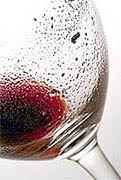 Sediments occasionally occur in bottled wine, and wine crystals are a type of sediment. The crystals are potassium tartrate (cream of tartar) which is found naturally in wine, and it will precipitate under certain conditions, such as prolonged storage at cold temperatures. The processing required to guarantee that these crystals will never form is generally considered to diminish the quality of the wine.
Sediments occasionally occur in bottled wine, and wine crystals are a type of sediment. The crystals are potassium tartrate (cream of tartar) which is found naturally in wine, and it will precipitate under certain conditions, such as prolonged storage at cold temperatures. The processing required to guarantee that these crystals will never form is generally considered to diminish the quality of the wine.
Wine crystals come in various shapes and sizes. Sometimes they resemble tiny grapenuts. Sometimes they resemble diamonds or tiny pieces of amber or ruby glass. Unlike glass, they will dissolve in warm or hot water.
Some wines may contain crystals when you buy them. Others may develop crystals after being stored in an unheated room during cold weather or simply refrigerated for a few days. The ideal serving temperature for wine is 50º - 70º F depending on the wine. From season to season, the proper serving temperature will be achieved by different methods. However, a wine should rarely need more than one hour in the refrigerator or 20 minutes in an ice bucket.
If crystals are present in the wine, you might prefer to decant the bottle before serving.
Decanting is recommended for wines with sediment. Often an older wine will throw particulate matter such as pigments or tartrate crystals. A younger wine may have tartrate crystals. First agitate the bottle to loosen any sediment that is clinging to the side. Then allow the bottle to rest upright until the sediment has settled to the bottom. The time depends on the type of sediment, with tartrate crystals settling rather rapidly (half an hour) and pigments requiring much longer (several days). You may want to allow two weeks to be on the safe side. If you wait longer, you will not hurt the wine.
Remove the capsule and cork carefully without tilting the bottle. Use a cloth to wipe off the rim of the bottle. Find a bright light or window. Position a carafe or a row of glasses so that they are handy. Hold the bottle at eye level against the light so that you are looking through the wine. Lift the carafe or a glass to the neck of the bottle. Tilt the bottle slowly and begin pouring the wine slowly and continuously. Do not stop pouring until you see the sediment reach the neck of the bottle, because the sediment will be agitated as soon as you move the bottle toward its upright position.

Δεν υπάρχουν σχόλια:
Δημοσίευση σχολίου